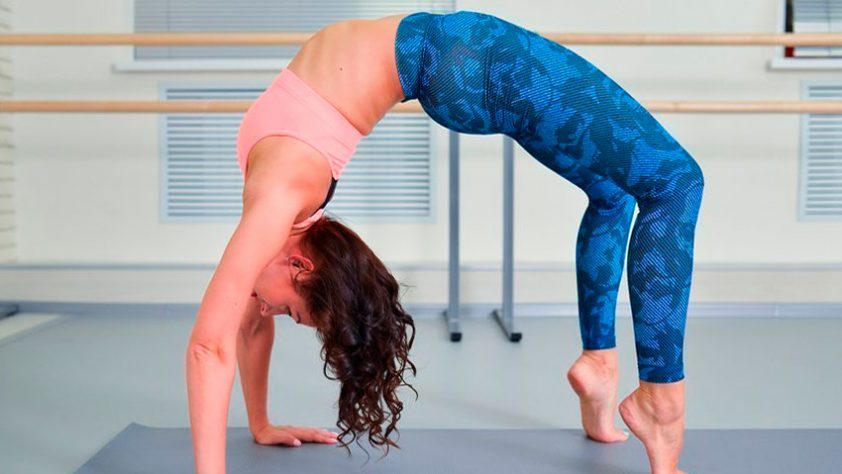The reverse plank is a gymnastic exercise. It is performed with body weight, there are analogues in yoga, Pilates and most health exercises. Exercise allows you to develop mobility in the shoulder joint, flexibility and strengthens the muscles of the abdomen, back, buttocks, legs. The movement is simple enough for beginners to master, can be used in the rehabilitation process of athletes and works well as both a warm-up and cool-down exercise.
Pros and cons of exercise
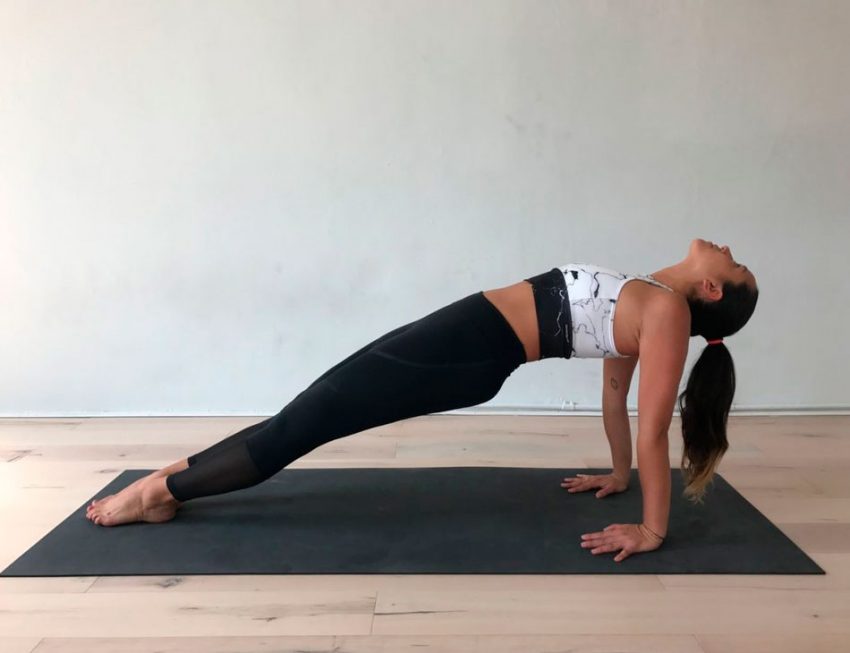
Before us is a plank in which the athlete turns face up in order to work out the back muscles to a greater extent.
Reverse plank benefits:
- strengthens the core;
- improves posture;
- tightens the stomach;
- strengthens the transverse muscle of the press;
- improves the condition of the lumbar spine;
- increases the mobility of the shoulder joint;
- stretches the press, namely the rectus muscle;
- helps to tighten the gluteal muscles.
The downside of the reverse plank is that a significant load falls on the trapezius muscles. If a person has a naturally impaired posture, he is used to raising his shoulders to his ears, he may experience significant pain when performing this exercise.
In addition, the reverse bar is contraindicated in pregnant women and in the recovery period after childbirth. For pregnant women, it only seems safe, because in fact it creates pressure on the fetus, and after childbirth, this position and the stand itself can be uncomfortable during the entire recovery period.
Execution technique
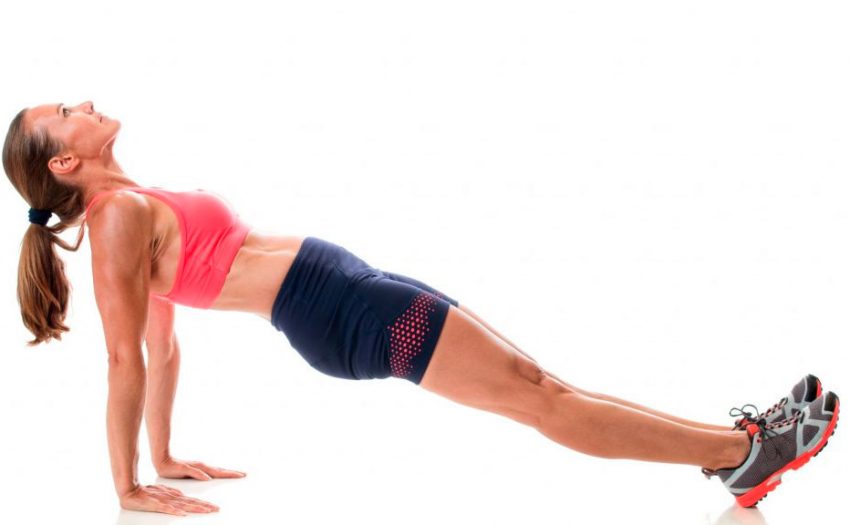
Unlike exercises in which muscles contract and relax, we have static. The exercise is to take a certain posture and hold it for some time.
- Starting position – sitting on the floor, palms under the shoulders, legs straight, extended forward, feet touching the floor;
- The knees are straight, you need to push off the floor with your buttocks and straighten so that the body takes the form of one straight line;
- The quads must be strained, the knees must be kept straight, the stomach must be pulled inward, the back must also be strained;
- Stay in this position for a specified time, usually 30-40 seconds or more; Then – drop to the floor.
During the exercise, you must breathe smoothly and slowly. Alternate deep breaths in and out, and don’t hold your breath.
Complication – a plank with a raised leg
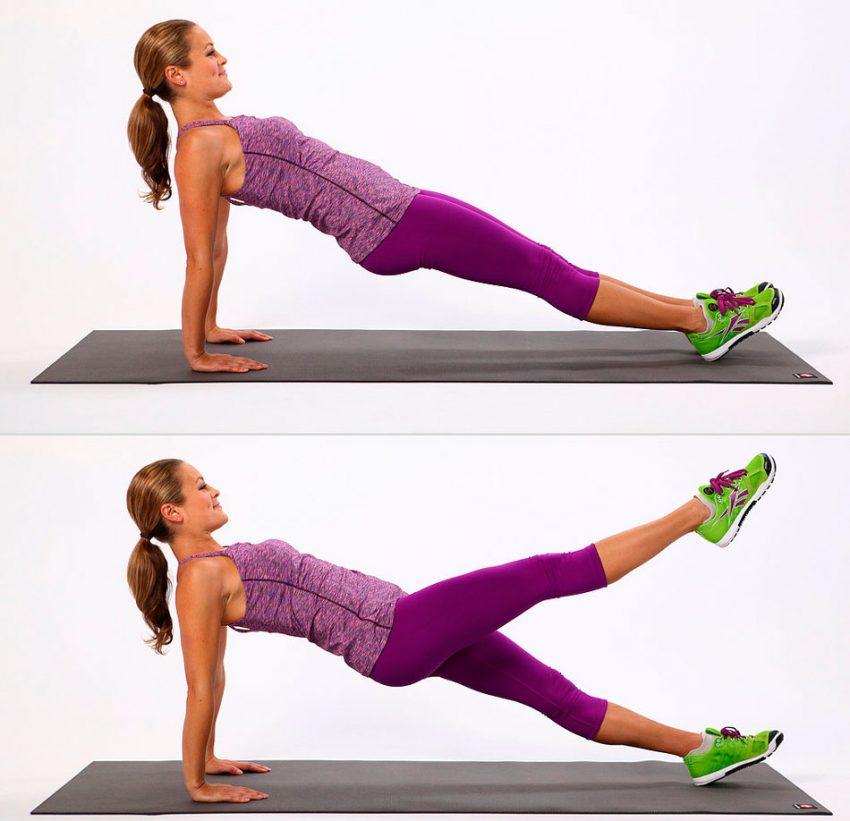
A more complicated option is a plank in which you need to lift your leg up. This will distribute the weight between one leg and two arms, the position will be less stable, and the muscles of the legs will be more loaded.
The exercise is performed as follows:
- Sit on the floor on your buttocks;
- Go to the reverse plank, take a few breaths in and out in order to even out the breath and keep the body straight;
- Transfer body weight to one leg and two arms;
- Lift your free leg off the floor, and stretch it forward and up;
- Repeat the exercise on the other leg, staying in the planks for the same amount of time.
Implementation in the training program
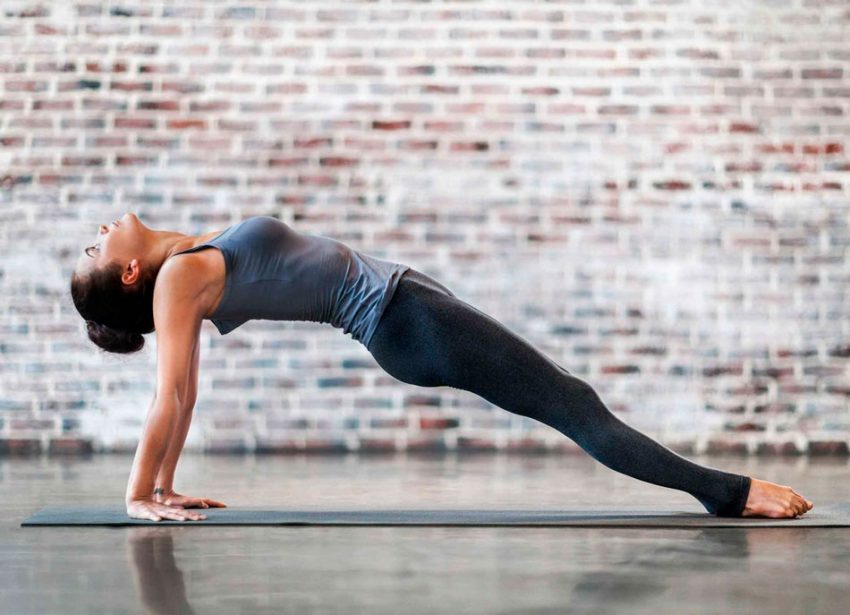
To introduce this bar into the training program, you need to set a main goal. If the plan is only gymnastic exercises, you can do it at least every day. It is worth starting with 30-40 seconds, then – to increase the duration of stay in the bar.
With an exercise, you can either start a workout, if it is strength, or end it. This is not a matter of principle, athletes choose to do what is more convenient for them. As soon as the potential for complications is exhausted, you need to move on to more complex statics, for example, a bridge between two shops
Technique recommendations:
- the exercise is best done barefoot so that your feet do not slip;
- toes and hands should be slightly spread out for stability;
- a good option is to maintain smooth calm breathing and hold in a pose due to strong muscle tension and distribution of body weight;
- do not bend back, do not push your pelvis up, and try to keep your arms perpendicular to the floor.
This type of plank helps to diversify the training process and achieve excellent results in working out all muscles.



